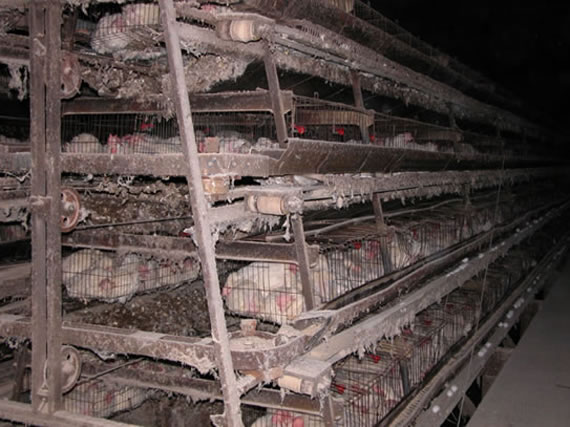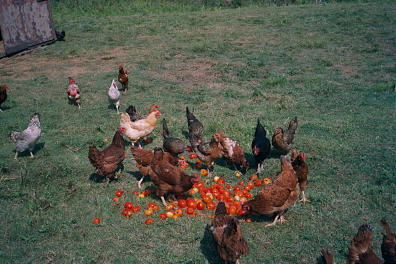Free Range Eggs: They’re NOT What You Think They Are
This post may contain affiliate links. As an Amazon Associate I earn from qualifying purchases. Please read the disclosure policy.
I know that when most people hear Free Range Eggs they picture chickens walking around in a pasture, clucking happily in the sun like they should be, but unfortunately that is not the case.

The label free range was intended to give consumers an idea about the conditions the chickens were kept in, so that they could make an informed decision when buying eggs, but due to irresponsible factory farm businesses, consumers are being duped.
The truth about free range is that it is nothing more than a label regulated by the USDA that has been abused by agribusiness companies who are more concerned with their bottom line than with healthy food and humane treatment of animals.
According to the USDA, the only requirements for labeling eggs as free range is the following:
“Producers must demonstrate to the Agency that the poultry has been allowed access to the outside.”
Many people are now aware that conventional egg-laying hens are kept in deplorable conditions. Most conventional egg-laying hens are kept in battery cages in a dark shed right next to other chickens. They are de-beaked so they can’t peck at each other and fed antibiotics and hormones just to keep them alive. Most of these hens never see sunlight and are never given an opportunity to walk since their cage does not allow for movement of any kind.

These conditions are bleary and sad, so it’s only natural that people would want to avoid supporting that and choose free-range instead, but the problem is that there is barely a difference between conventional and free range eggs.
What does “free range eggs” really mean?
Since the USDA’s definition of free-range is so weak, manufacturers are allowed to pack hundreds or even thousands of chickens in a dark shed with a tiny opening at one end of the shed. The only requirement is that “the poultry has been allowed access to the outside”. Most of the chickens are not aware of the opening, cannot physically access the opening or the opening only leads to a very small fenced outdoor section that wouldn’t allow enough space for even a few hens. Most free-range hens do not see outdoors more than a handful of times in their lives.

What free-range does NOT mean:
Free range eggs does NOT mean that the chickens were treated humanely. Most agribusinesses employ the same exact methods of de-beaking and unhealthy living conditions that conventional factory farms do.
Free range eggs does NOT mean that the chickens are free from antibiotics or hormones.
Free range eggs does NOT mean that the chickens spent a substantial amount of time outside, it may even mean that they don’t step foot outside more than a few times in their lives.
Free range eggs does not mean that the eggs are organic or GMO-free.
Which Egg Label REALLY Means that the Hens Roam Free?
Pastured eggs are the only ones that you can trust that the hens actually spend substantial time outside.

Pastured means that they actually graze outside and are allowed to forage on grass and bugs. The hens get vitamin D from the sunlight and are all-around healthier and therefore create more nutrient dense eggs.
In fact, a study done in 2007 found that pastured eggs had:
• 2/3 more vitamin A
• 2 times more omega-3 fatty acids
• 3 times more vitamin E
• 7 times more beta carotene
What pastured does NOT mean:
Although pastured eggs are the best and most humane option, it doesn’t necessarily mean that the eggs are organic or GMO-free.
Sometimes pastured hens can still receive supplemental feed which can contains GMO corn or soy. To avoid this, you can either buy organic pastured eggs or pastured eggs that are labelled as non-GMO.
If you buy eggs from a farmer’s market, simply ask your farmer if they give their chicken supplemental feed and if it’s gmo-free.


